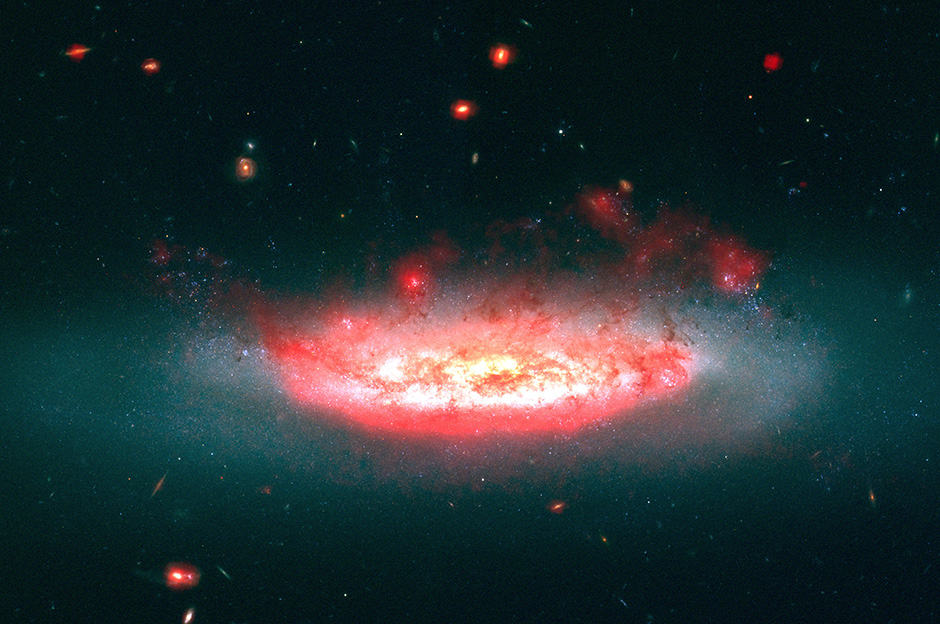Astronomers at the University of Arizona and the Dunlap Institute at the University of Toronto have finally solved the 40-year-old mystery of why galaxies in clusters tend to have less star formation than non-clustered or “field” galaxies. They have provided the first direct evidence that intergalactic wind is stripping galaxies of molecular hydrogen, which is an essential star–forming element.
Several theories have been presented in the past to explain the fundamental difference in star formation between clustered and field galaxies.
One model that has been proposed describes how, when a galaxy falls into the cluster, the hot gas from the cluster blows out the least dense gas from the incoming galaxy, an effect that is called “ram-pressure stripping.” This least dense gas consists mainly of atomic hydrogen which cannot form stars directly. However, when dense enough, atomic hydrogen converts to molecular hydrogen, which can then go on to form stars through nuclear fusion. Without this gas, the galaxy cannot form stars and slowly dies.
For the last few years, astronomers have detected trails of young stars in many galaxy clusters. These young stars look like they have been pushed out of the galaxy cluster. However, ram-pressure stripping is not powerful enough to remove entire stars from a galaxy.
Dr. Suresh Sivanandam, a research fellow at the Dunlap Institute for Astronomy and Astrophysics, and his team inferred in their original findings that there must be molecular hydrogen present in these trails.
The most difficult aspect of this study was actually detecting the molecular hydrogen, because it is invisible and normally gives off very little radiation in the infrared spectrum. However, the unique process of ram-pressure stripping heats the molecular hydrogen, allowing astronomers to detect it by using infrared telescopes. Through readings from the Hubble telescope, the Spitzer telescope, and data from previous studies, Sivanandam and his team were able to detect clear bands of molecular hydrogen being ripped out of these galaxies.
Sivanandam, when asked about the major obstacles of the study, says that, “The main obstacle is… trying to come up with a coherent explanation for the results.” He adds, “We have a couple [of] different galaxies with slightly different behaviours, and [we are] trying to come up with some explanation that can properly explain what we observe.”
This study represents the first time that scientists can actually see how star formation is halted in these types of galaxies. Ultimately, these new results could provide insight into how galaxies have evolved from the early Universe to the present.


